Nationality American Space time 180d 1h 51m Other occupation Test pilot Role Astronaut | Other names Scott Joseph Kelly Name Scott Kelly Status Active Time in space Currently in space Siblings Mark Kelly | |
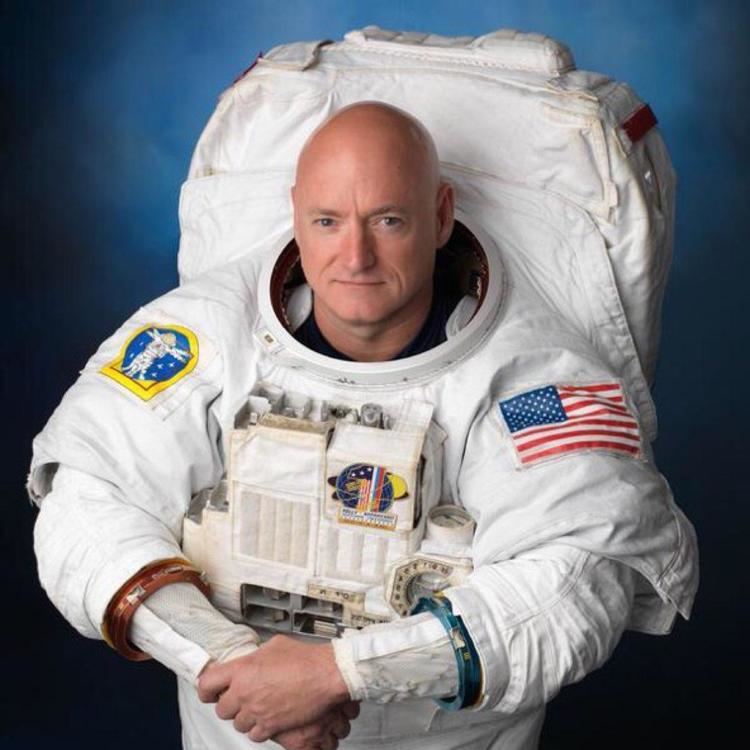 | ||
Spouse Leslie S. Yandell (m. ?–2009) Similar People Profiles | ||
Nasa astronaut scott kelly reflects on his year in space
Scott Joseph Kelly (born February 21, 1964 in Orange, New Jersey) is an engineer, retired American astronaut, and a retired U.S. Navy Captain. A veteran of four space flights, Kelly commanded the International Space Station (ISS) on Expeditions 26, 45, and 46.
Contents
- Nasa astronaut scott kelly reflects on his year in space
- Astronaut scott kelly on the psychological challenges of going to mars
- Naval career
- NASA career
- STS 103
- STS 118
- Soyuz TMA 01M
- ISS Expedition 25
- ISS Expedition 26
- September 2010 interview
- Year long mission
- Post NASA
- Education
- Personal life
- Organizations
- Awards
- Honors
- References
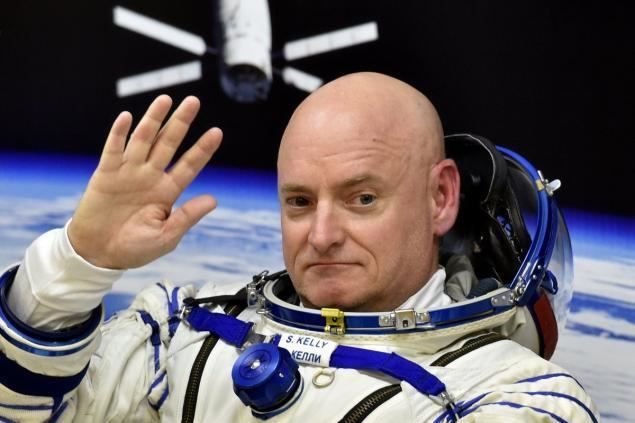
Kelly's first spaceflight was as pilot of Space Shuttle Discovery, during STS-103 in December 1999. This was the third servicing mission to the Hubble Space Telescope, and lasted for just under eight days. Kelly's second spaceflight was as mission commander of STS-118, a 12-day Space Shuttle mission to the International Space Station in August 2007. Kelly's third spaceflight was as commander of Expedition 26 on the ISS. He arrived 9 October 2010, on a Russian Soyuz spacecraft, during Expedition 25, and served as a flight engineer until it ended. He took over command of the station on 25 November 2010, at the start of Expedition 26 which began officially when the spacecraft Soyuz TMA-19 undocked, carrying the previous commander of the station, Douglas H. Wheelock. Expedition 26 ended on 16 March 2011 with the departure of Soyuz TMA-01M. This was Kelly's first long-duration spaceflight.
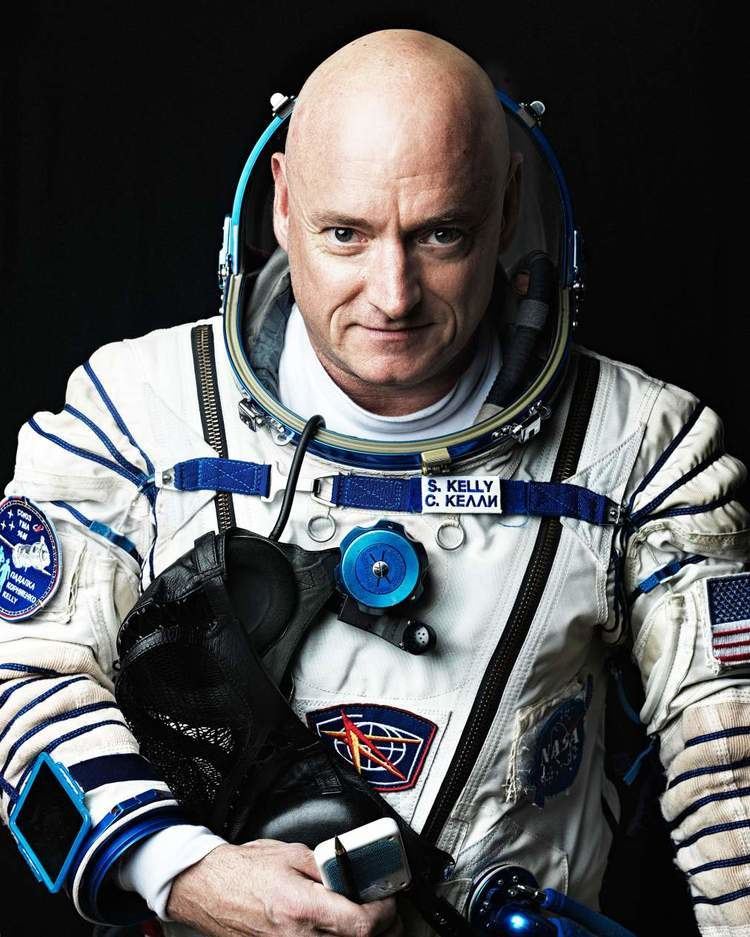
In November 2012, Kelly was selected, along with Mikhail Korniyenko, for a special year-long mission to the International Space Station. Their year in space commenced 27 March 2015 with the start of Expedition 43, continued through the entirety of Expeditions 44, and 45, both of which Kelly commanded. He passed command to Timothy Kopra on 29 February 2016, when the ISS year long mission ended. He returned to Earth aboard Soyuz TMA-18M on 1 March 2016.

In October 2015, he set the record for the total accumulated number of days spent in space by an American astronaut, 520. This record was broken in 2016 by astronaut Jeff Williams. For the ISS year long mission, Kelly spent 340 consecutive days in space. Kelly's identical twin brother, Mark Kelly, is a former astronaut. The Kelly brothers are the only siblings to have traveled in space. On March 12, 2016, Kelly announced his retirement for April 2016.
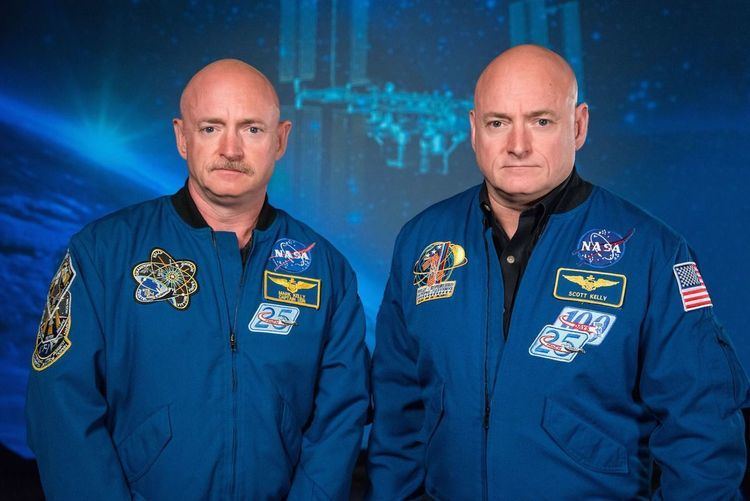
Astronaut scott kelly on the psychological challenges of going to mars
Naval career
Scott Kelly received his commission via the Navy Reserve Officer Training Corps (NROTC) following graduation from the State University of New York Maritime College in May 1987. He was designated a Naval Aviator in July 1989 at Naval Air Station Chase Field in Beeville, Texas.
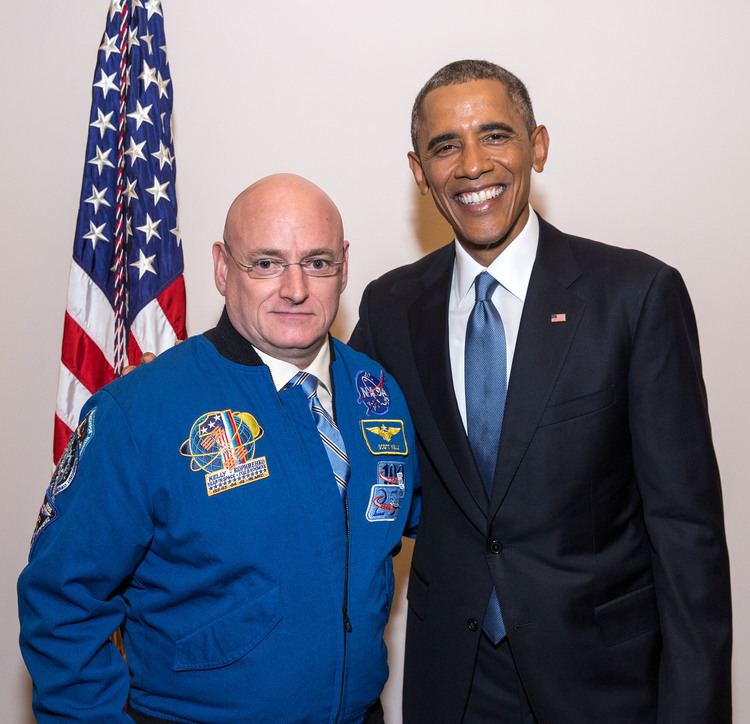
He reported to Fighter Squadron 101 (VF-101) at Naval Air Station Oceana, Virginia, for initial F-14 Tomcat training. Upon completion of this training, he was assigned to Fighter Squadron 143 (VF-143) and made overseas deployments to the North Atlantic, Mediterranean Sea, Red Sea and Persian Gulf aboard the aircraft carrier USS Dwight D. Eisenhower.
Scott Kelly was selected to attend the U.S. Naval Test Pilot School at Naval Air Station Patuxent River, Maryland in January 1993 and completed training in June 1994. After graduation, he worked as a test pilot at the Strike Aircraft Test Squadron, Naval Air Warfare Center, Aircraft Division, at Patuxent River, flying the F-14A/B/D, F/A-18A/B/C/D and KC-130F. Kelly was the first pilot to fly an F-14 with an experimental digital flight control system installed and performed subsequent high angle of attack and departure testing.
He has logged more than 8,000 flight-hours in more than 40 different aircraft and spacecraft. Kelly has more than 250 carrier landings.
After attaining the rank of Captain in the U.S. Navy, Kelly retired from active duty on June 1, 2012 after 25 years of Naval service and continued to serve as an astronaut and civil servant until his second retirement in April 2016.
NASA career
Selected by NASA in April 1996, Kelly reported to the Johnson Space Center in August 1996. On completion of training, he was assigned to technical duties in the Astronaut Office Spacecraft Systems/Operations Branch.
Kelly was assigned to flight status on NASA's Space Shuttle program, officially designated Space Transportation System, or STS. After Kelly's first flight on STS-103 he served as NASA’s Director of Operations in Star City, Russia. Kelly was a back-up crew member for ISS Expedition 5. He also served as the Astronaut Office Space Station Branch Chief.
In September 2002, Kelly served as the commander of the NEEMO 4 mission aboard the Aquarius underwater laboratory, four miles off shore from Key Largo. Kelly and his crewmates spent five days saturation diving from Aquarius as a space analogue for working and training under extreme environmental conditions. The mission was delayed due to Hurricane Isadore, forcing National Undersea Research Center (NURC) managers to shorten it to an underwater duration of five days. Then, three days into their underwater mission, the crew members were told that Tropical Storm Lili was headed in their direction and to prepare for an early departure from Aquarius. Fortunately, Lili degenerated to the point where it was no longer a threat, so the crew was able to remain the full five days. In April 2005, Kelly was a crew member on the NEEMO 8 mission.
STS-103
Kelly was the pilot of STS-103 Discovery (December 19–27, 1999), on an eight-day mission during which the crew successfully installed new instruments and upgraded systems on the Hubble Space Telescope (HST). Enhancing HST scientific capabilities required three space walks. Travelling 3,200,000 mi (5,100,000 km) in space, the STS-103 mission was accomplished in 120 Earth orbits, spanning 191 hours and 11 minutes.
STS-118
Kelly served as mission commander of STS-118 Endeavour (August 8–21, 2007), the 119th Space Shuttle flight, the 22nd flight to the station and the 20th flight for Endeavour. During the mission, Endeavour's crew successfully added a truss segment, a new gyroscope and external spare parts platform to the International Space Station. A new system that enables docked shuttles to draw electrical power from the station to extend visits to the outpost was activated successfully.
During and after the mission, the media focused heavily on a small puncture in the heat shield, created by a piece of insulation foam that came off the external tank of Endeavour during liftoff. Foam impact was the cause of the destruction of Space Shuttle Columbia, but the extent of damage was very small in comparison and in a less critical area.
Four spacewalks (EVAs) were performed by three crew members. Endeavour carried some 5,000 lb (2,300 kg) of equipment and supplies to the station and returned to Earth with some 4,000 lb (1,800 kg) of hardware and no longer needed equipment. Travelling 5,300,000 miles (8,500,000 km) in space, the STS-118 mission was completed in 12 days, 17 hours, 55 minutes and 34 seconds.
Soyuz TMA-01M
Kelly flew to the ISS aboard Soyuz TMA-01M from the Baikonur Cosmodrome in Kazakhstan at 7:10 pm EDT on Thursday, October 7, 2010 (5:10 am Friday in Kazakhstan). Aboard the Soyuz rocket with Kelly were Soyuz Commander Aleksandr Kaleri of Russia and Russian Flight Engineer Oleg Skripochka.
TMA-01M is the first of a new generation of the Soyuz spacecraft. Kelly discussed the upgrades in a pre-flight interview: "The improvements are rather significant. The displays that the cosmonauts and myself—although my role in the Soyuz is somewhat minor—use to control the vehicle have been upgraded to make flying it easier. It’s less operator-intensive, but the main and most important change is they have a new, what we would refer to as a flight control computer. So the computer that operates the systems on board is new and the software is new.
"Now the software is written in a way to kind of model the previous algorithms that control the vehicle but it is new software and it is new hardware, most of which has been tested on the Progress, Russian resupply vehicles, but the Progress doesn’t re-enter the same way as the Soyuz does so when we come home in March it’ll be the first time that this new flight control computer and the entry software will be demonstrated in flight."
ISS Expedition 25
Kelly, Aleksandr Kaleri and Oleg Skripochka arrived at the International Space Station on October 9, 2010. Kelly served as flight engineer during his time on Expedition 25. October 9 marked the beginning of the second part of Expedition 25 bringing the number of people aboard the ISS to six. The rest of the crew included Commander Douglas H. Wheelock, along with flight engineers Shannon Walker and Fyodor Yurchikhin.
ISS Expedition 26
Kelly was the commander of Expedition 26 which began on November 25, 2010, when half of the crew of Expedition 25 returned to Earth on Soyuz TMA-19. On January 8, 2011, with over two months remaining in the mission, Kelly's sister-in-law Congresswoman Gabrielle Giffords was shot in Tucson. Kelly returned to Earth, landing in Kazakhstan on March 16, 2011. He traveled directly to Houston to see his brother and Giffords.
Prior to his mission Kelly was asked about what it will be like to command the ISS: "Certainly as the commander you’re responsible for safety and the health of your people and making sure they have everything they need to do their jobs. I’ll certainly be conscious of those things but we’re all professionals, we all understand what we need to do, and we’re all kind of self-starters and kind of take care of ourselves very well so it shouldn’t be much different than when Doug Wheelock, the previous commander, was in charge."
During Kelly’s time aboard the International Space Station (including Expeditions 25 and 26) there were several space vehicle visits. These included:
Problems with the launch of Discovery pushed shuttle mission STS-134 beyond the time of Kelly's stay aboard the ISS. STS-134 was commanded by Kelly's brother Mark.
September 2010 interview
In anticipation of the potential rendezvous in space of the Kelly brothers, NASA conducted an extensive interview with Scott and Mark which is available on the NASA website.
Year-long mission
In November 2012, NASA, the Russian Federal Space Agency (Roscosmos), and their international partners selected two veteran spacefarers for a one-year mission aboard the International Space Station in 2015. This mission includes collecting scientific data important to future human exploration of our solar system. NASA selected Scott Kelly and Roscosmos chose Mikhail Korniyenko. Kelly and Korniyenko launched aboard a Russian Soyuz spacecraft from the Baikonur Cosmodrome in Kazakhstan on March 27, 2015 and landed in Kazakhstan on March 1, 2016 (U.S. time). Kelly and Korniyenko already have a connection; Kelly was a backup crew member for the station's Expedition 23/24 crews, where Korniyenko served as a flight engineer. The goal of their year-long expedition aboard the orbiting laboratory is to understand better how the human body reacts and adapts to the harsh environment of space. Data from the 12-month expedition will help inform current assessments of crew performance and health and will determine better and validate countermeasures to reduce the risks associated with future exploration as NASA plans for missions around the moon, an asteroid and ultimately Mars. Part of this research also includes a comparative study on the genetic effects of spaceflight with Scott’s twin brother Mark as the ground control subject.
On January 8, 2016, Kelly appeared in the thank you note segment of The Tonight Show Starring Jimmy Fallon, with the first ever thank you note from space.
Kelly’s year in space included 5,440 orbits around the Earth and he conducted three spacewalks before returning home in March 2016.
On March 12, 2016, Astronaut Scott Kelly announced his retirement from NASA effective April 1, 2016.
Post NASA
Scott Kelly was appointed as United Nations Champion for Space by the United Nations Office for Outer Space Affairs (UNOOSA), in November 2016. As a champion for space, Kelly will help raise awareness of UNOOSA outreach and activities, and especially the upcoming UNISPACE+50 event in June 2018. The Champion for Space role is based on the United Nations Messengers of Peace model, and Kelly's term will be for an initial period of two years.
Kelly's memoir, Endurance: A Year in Space, a Lifetime of Discovery, will be published by Alfred A. Knopf in October 2017. The book will be co-written with Margaret Lazarus Dean.
Education
Kelly graduated from Mountain High School in 1982. He received a B.S. degree in Electrical Engineering from the State University of New York Maritime College in 1987, and an M.S. degree in Aviation Systems from the University of Tennessee, Knoxville, in 1996.
Personal life
Kelly was born in Orange, New Jersey, to Patricia and Richard Kelly, and raised in the nearby community of West Orange. Kelly is of Irish descent. He attended Mountain High School along with his identical twin brother Mark. While in high school, Kelly worked as an emergency medical technician. He was married to Leslie S. Yandell and has two daughters, Samantha and Charlotte. He now is in a relationship with Amiko Kauderer, a Public Affairs Officer for NASA. His sister-in-law is Gabrielle Giffords, the former congresswoman from Arizona.
Organizations
Kelly is an Associate Fellow of the Society of Experimental Test Pilots and a member of the Association of Space Explorers.
Awards
He has received the following awards and decorations:
